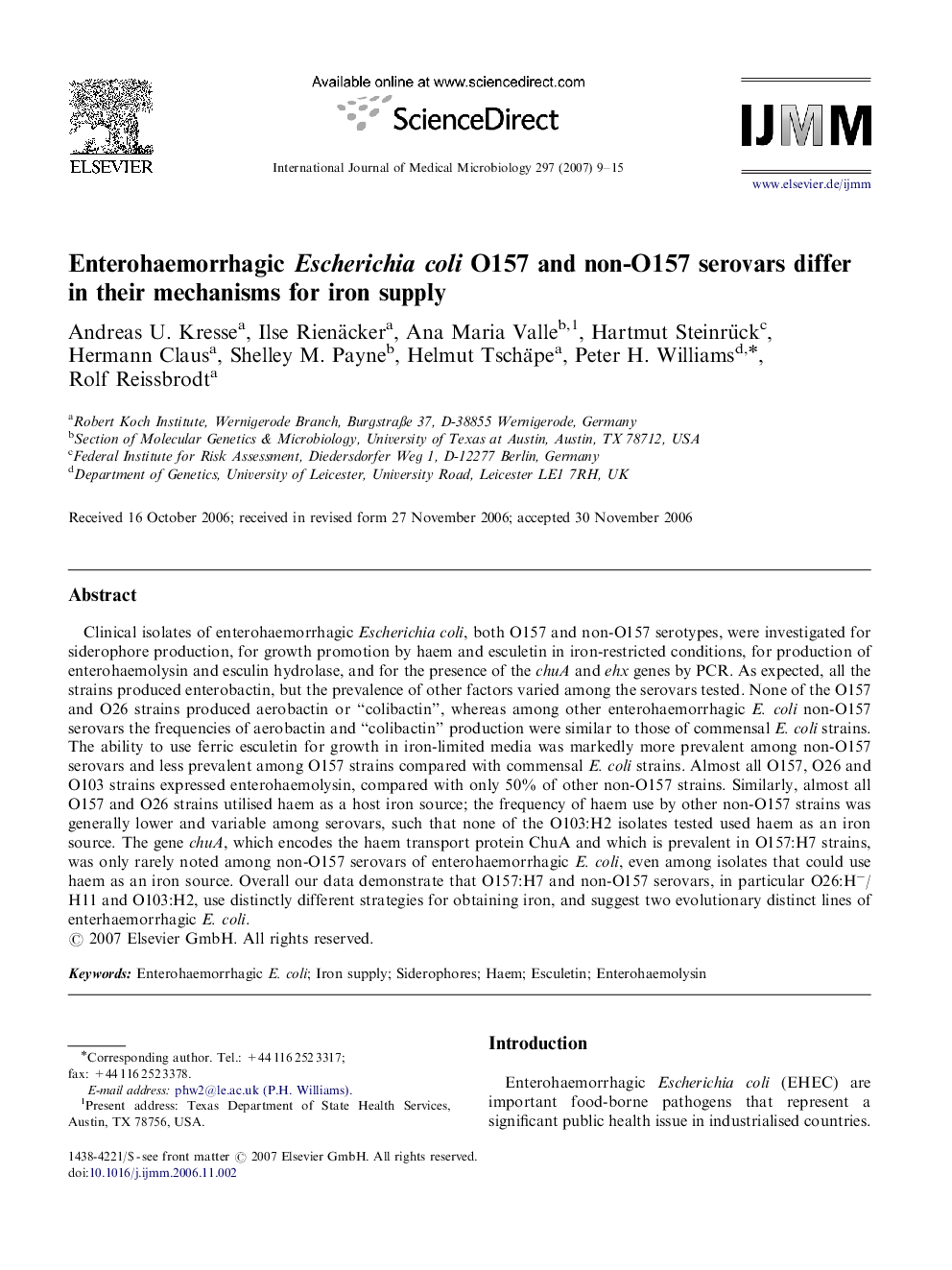| کد مقاله | کد نشریه | سال انتشار | مقاله انگلیسی | نسخه تمام متن |
|---|---|---|---|---|
| 2054568 | 1543750 | 2007 | 7 صفحه PDF | دانلود رایگان |

Clinical isolates of enterohaemorrhagic Escherichia coli, both O157 and non-O157 serotypes, were investigated for siderophore production, for growth promotion by haem and esculetin in iron-restricted conditions, for production of enterohaemolysin and esculin hydrolase, and for the presence of the chuA and ehx genes by PCR. As expected, all the strains produced enterobactin, but the prevalence of other factors varied among the serovars tested. None of the O157 and O26 strains produced aerobactin or “colibactin”, whereas among other enterohaemorrhagic E. coli non-O157 serovars the frequencies of aerobactin and “colibactin” production were similar to those of commensal E. coli strains. The ability to use ferric esculetin for growth in iron-limited media was markedly more prevalent among non-O157 serovars and less prevalent among O157 strains compared with commensal E. coli strains. Almost all O157, O26 and O103 strains expressed enterohaemolysin, compared with only 50% of other non-O157 strains. Similarly, almost all O157 and O26 strains utilised haem as a host iron source; the frequency of haem use by other non-O157 strains was generally lower and variable among serovars, such that none of the O103:H2 isolates tested used haem as an iron source. The gene chuA, which encodes the haem transport protein ChuA and which is prevalent in O157:H7 strains, was only rarely noted among non-O157 serovars of enterohaemorrhagic E. coli, even among isolates that could use haem as an iron source. Overall our data demonstrate that O157:H7 and non-O157 serovars, in particular O26:H−/H11 and O103:H2, use distinctly different strategies for obtaining iron, and suggest two evolutionary distinct lines of enterhaemorrhagic E. coli.
Journal: International Journal of Medical Microbiology - Volume 297, Issue 1, 23 February 2007, Pages 9–15